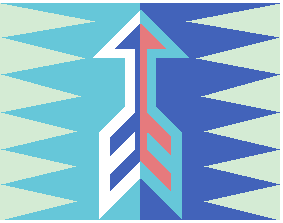Catherine
Ordemann, ED381

Leslie Owen Wilson/Updated Spring 2002
Catherine
Ordemann, ED381

Combination Plan #3
Using the Hunter Model and the Holistic Model
Grade Level: High school chemistry class
Aim: The students will increase their knowledge of scientific processes in chemistry.
Goal: Students will practice precision in the use of equipment related to chemistry and their use of metric measures.
Objectives:
Students will compare and analyze 3 sets of data, they have gathered, for accuracy and precision.
Students will decide if they will continue to use the modeled technique or use a different method approved by teacher.
Materials: (For 30 students)
30, 10 milliliter graduated cylinders
30 eye droppers
30 wash bottles
3-4 balances for weighing
paper and pencil for recording
Anticipatory Set: The teacher will review the metric system, specifically the metric factors: liter, deciliter, centiliter and milliliter (ml) and grams. Common household products will be used to demonstrate when ml and grams should be used (For our example ml is used with liquid measurements and grams will be the weight of the substance.). The students will then be told they are going to practice measuring out exactly 10 ml of water into a graduated cylinder.
First they will weigh an empty 10-ml graduated cylinder and record the weight.
Then they will fill with water to the mark and re-weigh. The difference between these two numbers will be the actual weight of the liquid. They will have to perform at least 3 runs, which will be turned in for a possible 10-point total.
Grading criteria will be based on accuracy and precision.
Modeled Practice: The teacher will model how to measure and weigh the samples. First the graduated cylinder will be weighed on the balance to the nearest 0.00 grams and this weight will be recorded on the board. Next it will be filled with water from the squeeze bottle to about 9-ml, the last ml will be added by single drops from an eye dropper. As the liquid surface reaches the end mark, the teacher should bend to table top level, to add to the proper level in the cylinder. The water in the cylinder will form a concave half circle, and the bottom of the curve should be directly on the 10-ml mark. This solution and cylinder should be weighed and then recorded. The first recording should be subtracted from the second, to give the weight of the liquid. This procedure will be done 3 times and the 3 totals will be compared for accuracy (how close they are in weight to a 10-ml equivalent) and for precision (how close the totals resemble each other).
Guided Practice: Each student will prepare one trial run and the teacher will visually check the filled graduated cylinder and make suggestions for improving accuracy to the mark. Students will then complete several runs to practice the technique and to correct problem areas.
Independent Practice: Each student will perform 3 runs and record the results. They will write a short summary of the results, discussing how closely their numbers were in precision and accuracy. These results will be handed in.
Closure: The students can submit modifications to the method to the teacher for approval. Each student will clean up their station, then the group will discuss the original modeled technique and students' suggestions for modification. Analysis of varied models will also be discussed.
Evaluation: The student's scores will be evaluated on precision and accuracy. The following grading scale will be implemented: 9.5-10=10 points; 9.0-9.4=9; 8.5-8.9=8; 8.0-8.4=7; 7.5-7.9=6; 7.0-7.4=5; 6.5-6.9=4; 6.0-6.4=3; 5.5-5.9=2; 5.0-5.4=1. An average of the 3 scores will be used for a grade.
Multiple Intelligences Defined Links Pages- Multiple Intelligences Naturalistic Intelligence Defined Holistic Lessons Back to Lesson Plans Next set combination of plans: